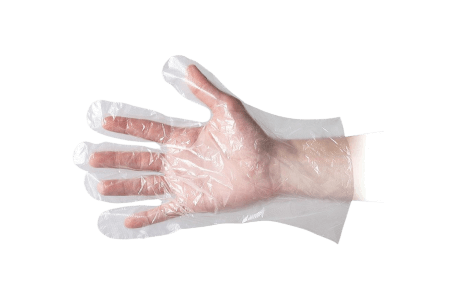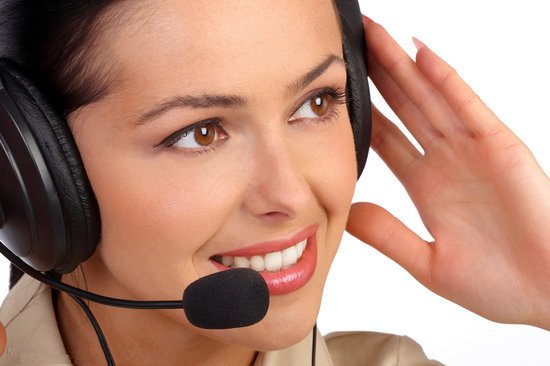Is Polyethylene Gloves Safe for Food?
Published on 2025/9/24

Share to:
Is Polyethylene Gloves Safe for Food?
Yes, polyethylene gloves that are explicitly labeled as "Food Grade" or "FDA Compliant" are safe for food contact. The FDA regulates these gloves to ensure the materials are inert and will not leach harmful substances into food.
In the world of food handling, from professional kitchens to home cooking, the question of safety is paramount. A common sight in delis, bakeries, and buffet lines is the use of thin, disposable plastic gloves. The most basic and affordable of these are often made from polyethylene. But are these ubiquitous polyethylene gloves truly safe for contact with food?
The short answer is yes, polyethylene gloves that are manufactured and labeled as "food-grade" are safe for food contact. However, understanding the nuances is crucial for using them correctly and effectively.
What Are Polyethylene Gloves?
Polyethylene (PE) is one of the most common types of plastic in the world. You know it as the material used for plastic bags, shrink wrap, and bottles. Polyethylene gloves are the lightweight, inexpensive, often loose-fitting disposable gloves that are typically supplied in a dispenser box.
They are popular because they are:
Extremely affordable: They are the lowest-cost disposable glove option.
Easy to put on quickly: Their loose fit allows for rapid donning.
Effective as a bare-hand barrier: They create a physical layer between the food and the handler's hands.
The Proof of Safety: FDA Compliance
The key to food safety lies in the manufacturing process. In the United States, the Food and Drug Administration (FDA) regulates materials that come into contact with food. For polyethylene gloves to be deemed "food safe," they must comply with the FDA's regulations outlined in Title 21 of the Code of Federal Regulations (CFR).
This means the raw polyethylene material and any additives (like colorants or processing aids) must be approved for food contact. Gloves that meet this standard will be explicitly labeled as "Food Grade" or "FDA Compliant."
Why are they safe? Polyethylene is an inert material. It does not react with most chemicals and does not leach harmful substances into food under normal food-handling conditions. This inert nature makes it a suitable barrier for handling a wide variety of foods.
The Important Limitations of Polyethylene Gloves
While FDA-compliant polyethylene gloves are safe, they are not always the best choice for every food-handling task. Their primary limitations are related to performance:
Puncture and Tear Resistance: This is the most significant drawback. Polyethylene gloves are very thin and offer minimal protection against sharp bones, shellfish shells, or even rough vegetable skins. A tear can compromise the barrier without the handler immediately noticing.
Fit and Dexterity: They are typically designed to be one-size-fits-all with a loose, baggy fit. This can reduce grip and make delicate tasks (like garnishing a dish or deboning a fish) clumsy and difficult.
Heat Sensitivity: Polyethylene has a low melting point. They are not suitable for handling hot food or equipment, as they can melt, creating both a safety hazard and contaminating the food.
Barrier for Microorganisms: While they provide a physical barrier, their integrity is fragile. If torn, they offer no protection. Furthermore, because they are loose, they can easily become contaminated from the wearer's hands or sleeves if pulled on incorrectly.
When to Use (and Not Use) Polyethylene Gloves
Ideal Uses for Polyethylene Gloves:
Handling ready-to-eat foods: For tasks like plating baked goods, assembling sandwiches, or serving pre-cooked items at a buffet.
Short-term, low-risk tasks: Weighing ingredients, handling breads or pastries.
As an economical option for high-volume, quick tasks where gloves are changed frequently.
When to Choose a Different Glove:
Handling raw meat, poultry, or fish: The risk of punctures is too high. Nitrile gloves are a much safer choice due to their superior strength and puncture resistance.
Performing tasks requiring fine motor skills: Vinyl or nitrile gloves offer a better fit and greater dexterity.
Handling hot foods or cleaning with hot water: Never use polyethylene gloves for this purpose.
When dealing with high-fat or oily foods: Polyethylene can become slippery and less effective.
The Most Important Rule: Gloves Complement, Don't Replace, Hygiene
It is critical to remember that gloves are a tool, not a magic solution. Food safety fundamentals still apply:
Wash Your Hands: Hands must be thoroughly washed and dried before putting on gloves.
Change Gloves Frequently: Gloves should be changed when they are torn, when switching between different types of food (especially from raw to ready-to-eat), and after performing non-food tasks like handling money or taking out the trash.
Don’t Be Complacent: Wearing gloves can create a false sense of security. The same cross-contamination risks exist if gloves are not changed appropriately.
Conclusion
FDA-compliant polyethylene gloves are food safe and serve a valid purpose in the food industry. Their affordability and convenience make them a good option for quick, low-risk tasks involving ready-to-eat foods.
However, their limitations in durability, fit, and heat resistance mean they are not a one-size-fits-all solution. For tasks involving sharp objects, raw proteins, or high heat, stronger alternatives like nitrile are the far safer choice. Ultimately, the safest practice is to choose the right glove for the task and to pair its use with impeccable hand hygiene.


 WhatsApp
WhatsApp
Send us your message
You can send an email asking for the price and detailed information of this product. We will reply you as soon as we receive your email